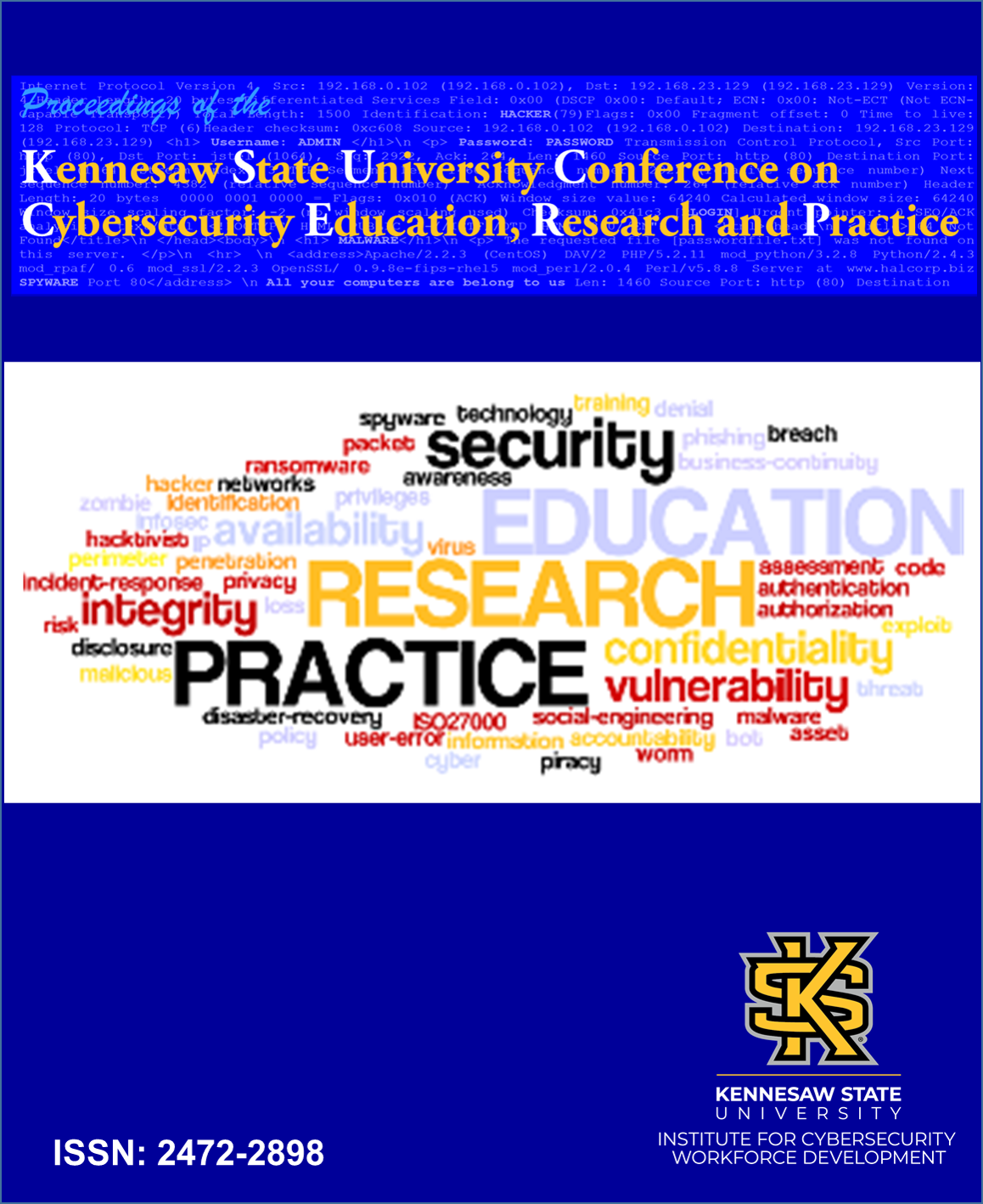Start Date
12-10-2019 10:30 AM
End Date
12-10-2019 10:55 AM
Location
KSU Center Rm 460
Abstract
Today’s college and university cybersecurity programs often contain multiple laboratory activities on various different hardware and software-based cybersecurity tools. These include preventive tools such as firewalls, virtual private networks, and intrusion detection systems. Some of these are tools used in attacking a network, such as packet sniffers and learning how to craft cross-site scripting attacks or man-in-the-middle attacks. All of these are important in learning cybersecurity. However, there is another important component of cybersecurity education – teaching students how to protect a system or network from attackers by learning their motivations, and how they think, developing the students’ “abilities to anticipate the strategic actions of cyber adversaries, including where, when, and how they might attack, and their tactics for evading detection.”
This paper describes the content and implementation of a 6 hour 15 minute (5 class sessions) module in Adversarial Thinking in a Network Security course, the students’ perceptions of the value and importance of the module as a result of their anonymous responses to a survey on the module, and the statistical results of a Data Breach Pretest-Posttest Assessment to measure how well they understood the concepts involved in Adversarial Thinking as part of learning cybersecurity.
Included in
Curriculum and Instruction Commons, Information Security Commons, Technology and Innovation Commons
Adversarial Thinking: Teaching Students to Think Like a Hacker
KSU Center Rm 460
Today’s college and university cybersecurity programs often contain multiple laboratory activities on various different hardware and software-based cybersecurity tools. These include preventive tools such as firewalls, virtual private networks, and intrusion detection systems. Some of these are tools used in attacking a network, such as packet sniffers and learning how to craft cross-site scripting attacks or man-in-the-middle attacks. All of these are important in learning cybersecurity. However, there is another important component of cybersecurity education – teaching students how to protect a system or network from attackers by learning their motivations, and how they think, developing the students’ “abilities to anticipate the strategic actions of cyber adversaries, including where, when, and how they might attack, and their tactics for evading detection.”
This paper describes the content and implementation of a 6 hour 15 minute (5 class sessions) module in Adversarial Thinking in a Network Security course, the students’ perceptions of the value and importance of the module as a result of their anonymous responses to a survey on the module, and the statistical results of a Data Breach Pretest-Posttest Assessment to measure how well they understood the concepts involved in Adversarial Thinking as part of learning cybersecurity.



Comments
Key words: Cybersecurity education, Adversarial thinking, Game theory, Behavioral game theory, Dominant strategies, Utility preferences, Interdependent choices